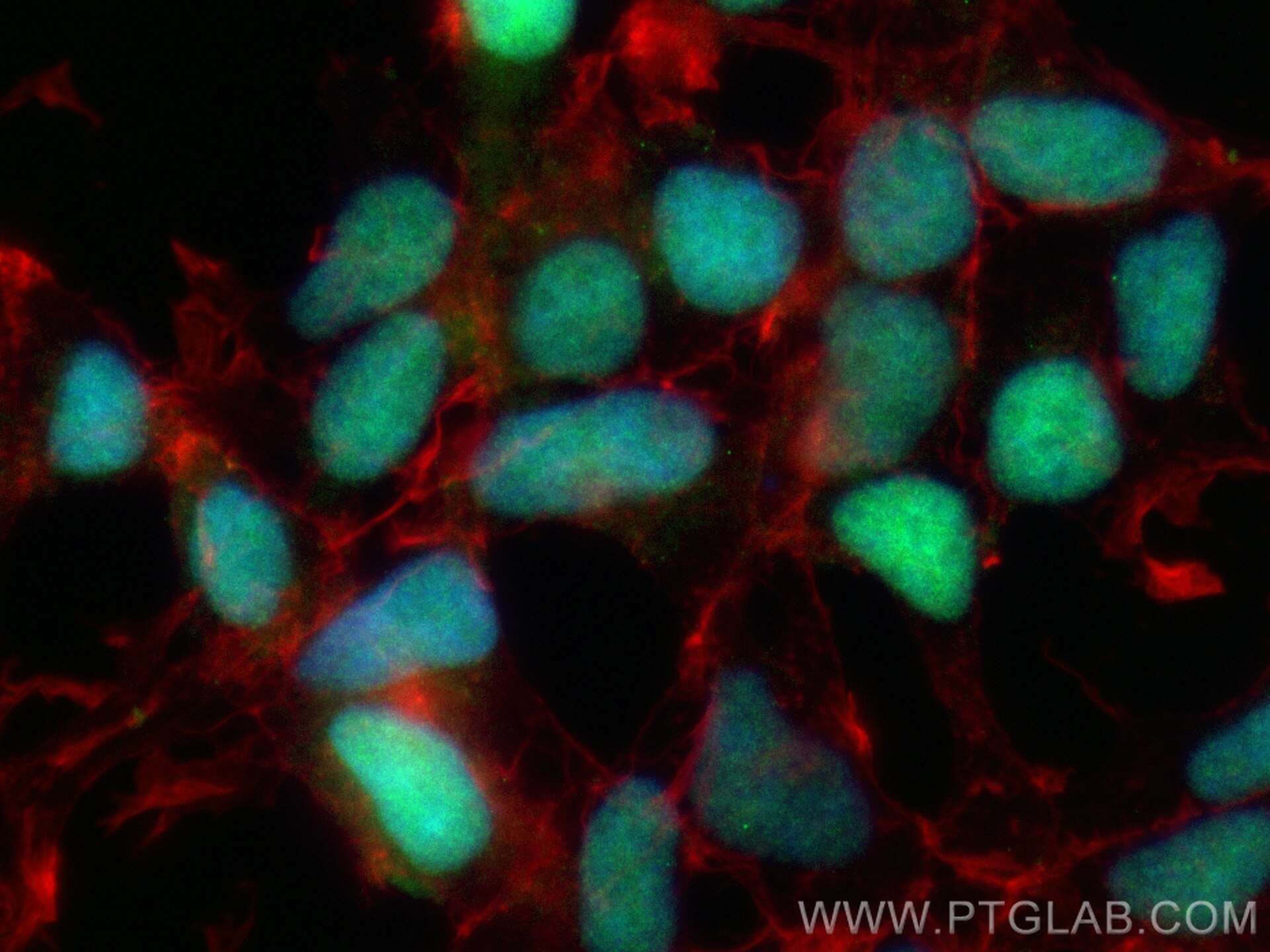Tested Applications
| Positive IF/ICC detected in | HEK-293 cells |
Recommended dilution
| Application | Dilution |
|---|---|
| Immunofluorescence (IF)/ICC | IF/ICC : 1:50-1:500 |
| It is recommended that this reagent should be titrated in each testing system to obtain optimal results. | |
| Sample-dependent, Check data in validation data gallery. | |
Product Information
CL488-85220-5 targets DFFA,DFF45 in applications and shows reactivity with human, rat samples.
| Tested Reactivity | human, rat |
| Host / Isotype | Rabbit / IgG |
| Class | Recombinant |
| Type | Antibody |
| Immunogen |
CatNo: Ag0244 Product name: Recombinant human DFFA,DFF45 protein Source: e coli.-derived, PGEX-4T Tag: GST Domain: 9-328 aa of BC000037 Sequence: GVPESGEIRTLKPCLLRRNYSREQHGVAASCLEDLRSKACDILAIDKSLTPVTLVLAEDGTIVDDDDYFLCLPSNTKFVALASNEKWAYNNSDGGTAWISQESFDVDETDSGAGLKWKNVARQLKEDLSSIILLSEEDLQMLVDAPCSDLAQELRQSCATVQRLQHTLQQVLDQREEVRQSKQLLQLYLQALEKEGSLLSKQEESKAAFGEEVDAVDTGISRETSSDVALASHILTALREKQAPELSLSSQDLELVTKEDPKALAVALNWDIKKTETVQEACERELALRLQQTQSLHSLRSISASKASPPGDLQNPKRARQ Predict reactive species |
| Full Name | DNA fragmentation factor, 45kDa, alpha polypeptide |
| Calculated Molecular Weight | 37 kDa |
| Observed Molecular Weight | 45 kDa |
| GenBank Accession Number | BC000037 |
| Gene Symbol | DFFA |
| Gene ID (NCBI) | 1676 |
| Conjugate | CoraLite® Plus 488 Fluorescent Dye |
| Excitation/Emission Maxima Wavelengths | 493 nm / 522 nm |
| Form | Liquid |
| Purification Method | Protein A purification |
| UNIPROT ID | O00273 |
| Storage Buffer | PBS with 50% glycerol, 0.05% Proclin300, 0.5% BSA, pH 7.3. |
| Storage Conditions | Store at -20°C. Avoid exposure to light. Stable for one year after shipment. Aliquoting is unnecessary for -20oC storage. |
Background Information
Apoptosis is accompanied by shrinkage and fragmentation of the cells and nuclei and degradation of the chromosomal DNA into nucleosomal units. DNA fragmentation factor (DFF), heterodimer of 40-kDa (DFFB) and 45-kDa (DFFA) subunits, is one of the major endonucleases responsible for internucleosomal DNA cleavage during apoptosis. DFFA is the substrate for caspase-3 and triggers DNA fragmentation during apoptosis. DFF activated after cleavage of DFFA by caspase-3 followed by its dissociation from DFFB. DFFB has been found to trigger both DNA fragmentation and chromatin condensation during apoptosis.
Protocols
| Product Specific Protocols | |
|---|---|
| IF protocol for CL Plus 488 DFFA,DFF45 antibody CL488-85220-5 | Download protocol |
| Standard Protocols | |
|---|---|
| Click here to view our Standard Protocols |




